PsychNewsDaily Publishers
100 Summit Drive
Burlington, MA, 01803
Telephone: (320) 349-2484
PsychNewsDaily Publishers
100 Summit Drive
Burlington, MA, 01803
Telephone: (320) 349-2484
Catcher interference occurs when the catcher touches the batter or their bat during a pitch, resulting in the batter being awarded first base.
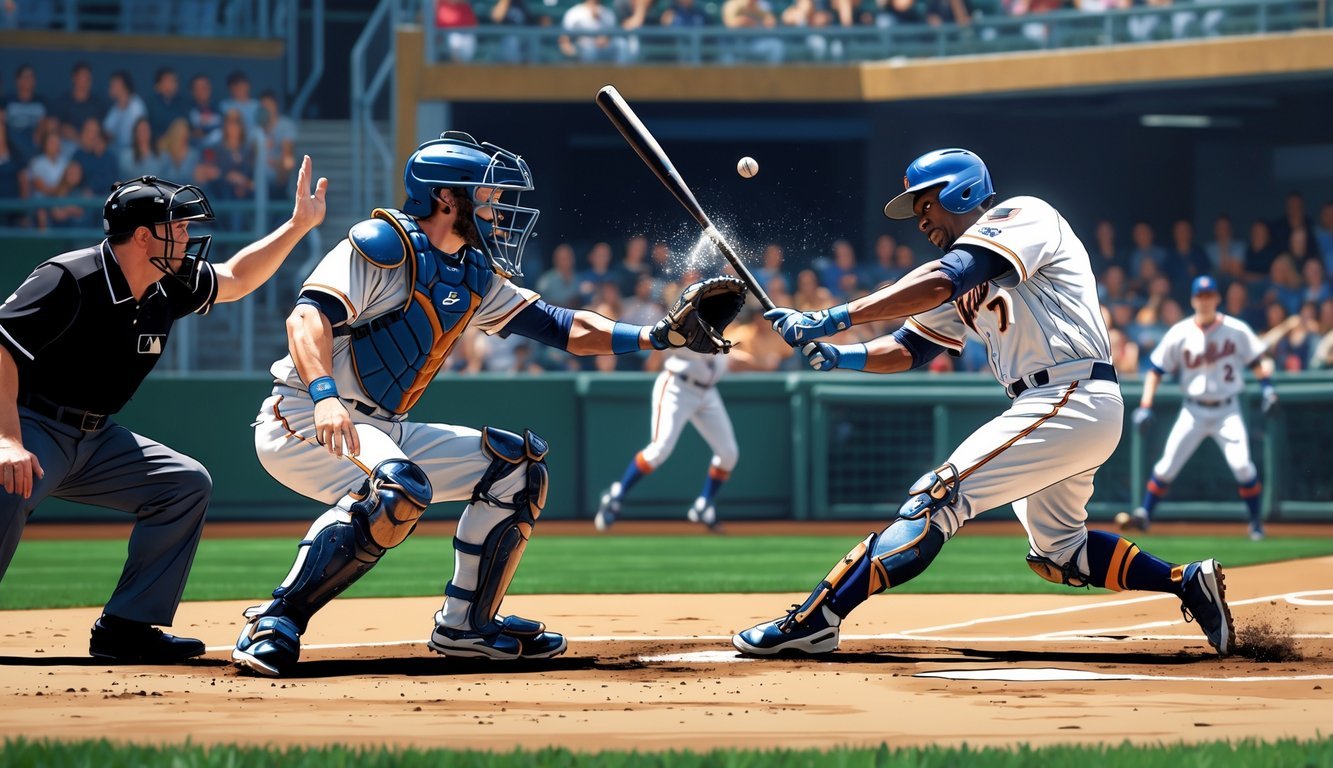
Catcher interference pops up when the catcher touches the batter or their bat during a pitch. If this happens, the batter gets first base. That rule exists to make sure the batter has a fair shot at hitting, without a glove or body in the way.
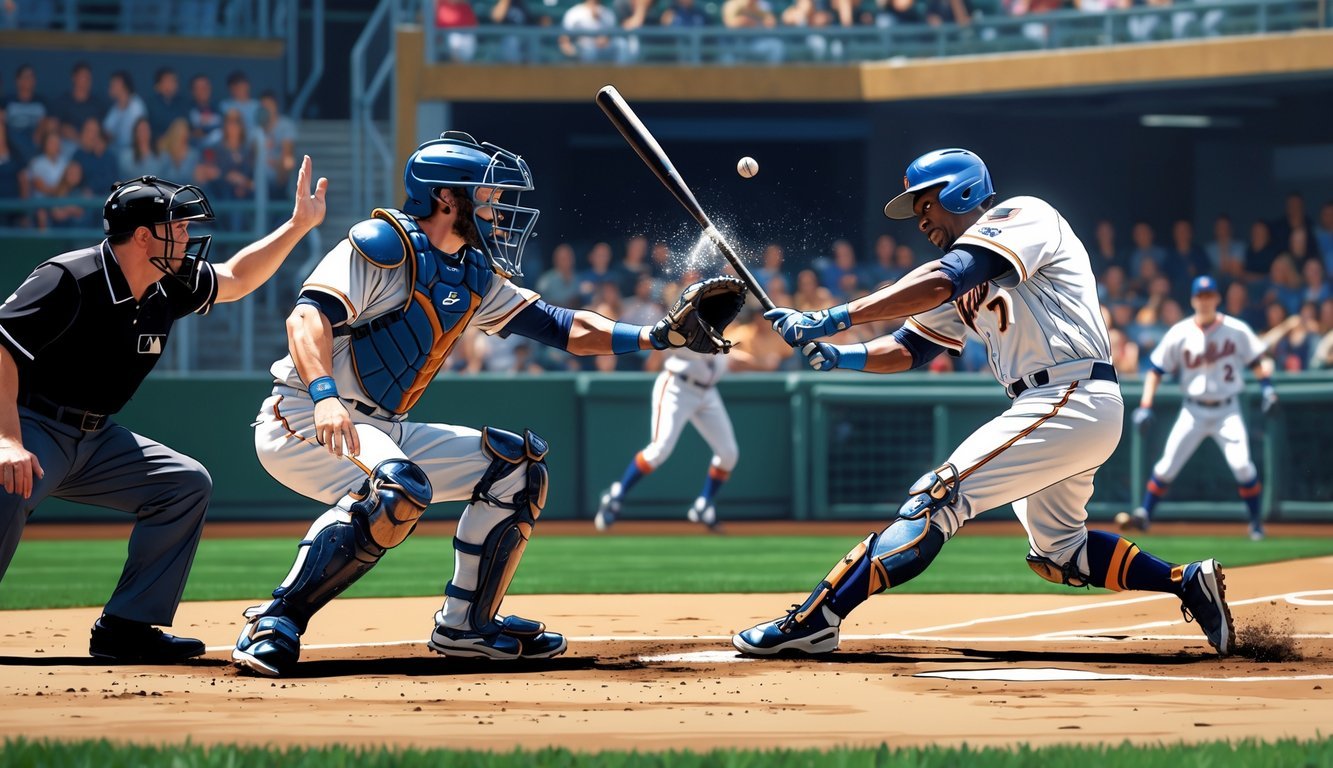
It might seem minor, but catcher interference can flip a game’s momentum. If you know the rule, you’ll have a better time following what’s happening on the field and why coaches make certain choices.
Fans, players, and coaches all benefit from understanding catcher interference. It really sheds light on how baseball tries to keep things fair.
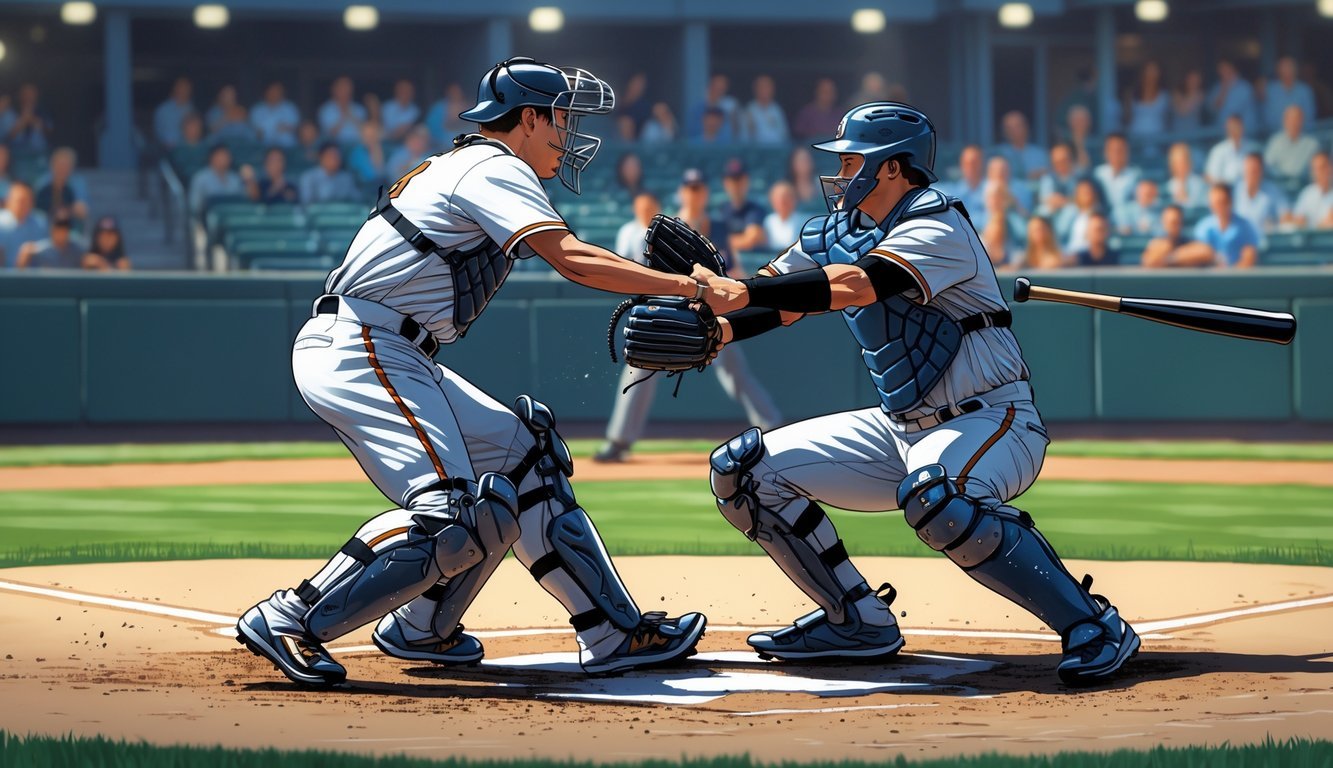
Catcher interference happens when the catcher gets in the way of the batter’s swing. If you know how it works, you’ll spot when a play stops and why a batter suddenly ends up on first.
It’s all about the rules, the situations where it happens, and those quick umpire decisions.
The catcher interferes when they touch the batter or their bat during a pitch. Rule 5.05(b)(3) in Major League Baseball spells it out—the batter loses a fair chance to hit if there’s contact.
The offensive team can ask the umpire to call it. Most of the time, the umpire awards the batter first base right away. The ball goes dead, and nothing else can happen after the call.
This rule is there to protect the batter’s swing. It doesn’t matter if the catcher meant to do it or not—if the contact messes with the batter, it counts.
You’ll often see catcher interference when the catcher reaches too far forward and bumps the bat or the batter’s hands.
For example:
If the batter still manages to hit the ball and get on base, the umpire might just let the play stand. But usually, if the umpire spots interference, they’ll stop play right away.
People mix up interference and obstruction a lot, but they’re not the same.
Catcher interference is when the catcher gets in the way of the batter’s swing. It only involves the batter.
Obstruction is when a fielder blocks or slows down a runner—not the batter. That usually happens when a runner’s moving around the bases.
Here’s a quick look:
| Term | Who is Affected | When It Happens |
|---|---|---|
| Catcher Interference | Batter during a pitch | During the pitch attempt |
| Obstruction | Runner on base | When fielders block runners |
If you know the difference, you’ll understand the umpire’s calls a lot better.
Umpires have to spot catcher’s interference in real time, which isn’t easy.
They watch the catcher’s glove and see if it messes with the batter’s swing. If it does, the umpire stops everything and calls interference.
The umpire decides if the interference really changed the batter’s chance to hit. Sometimes, small contact doesn’t matter, but other times it’s obvious.
If the umpire calls it, the batter goes to first base. Runners move up only if they have to. The umpire’s decision is final, so there’s no arguing it during the game.
Coaches or players might point out interference, but the umpire always gets the last say.
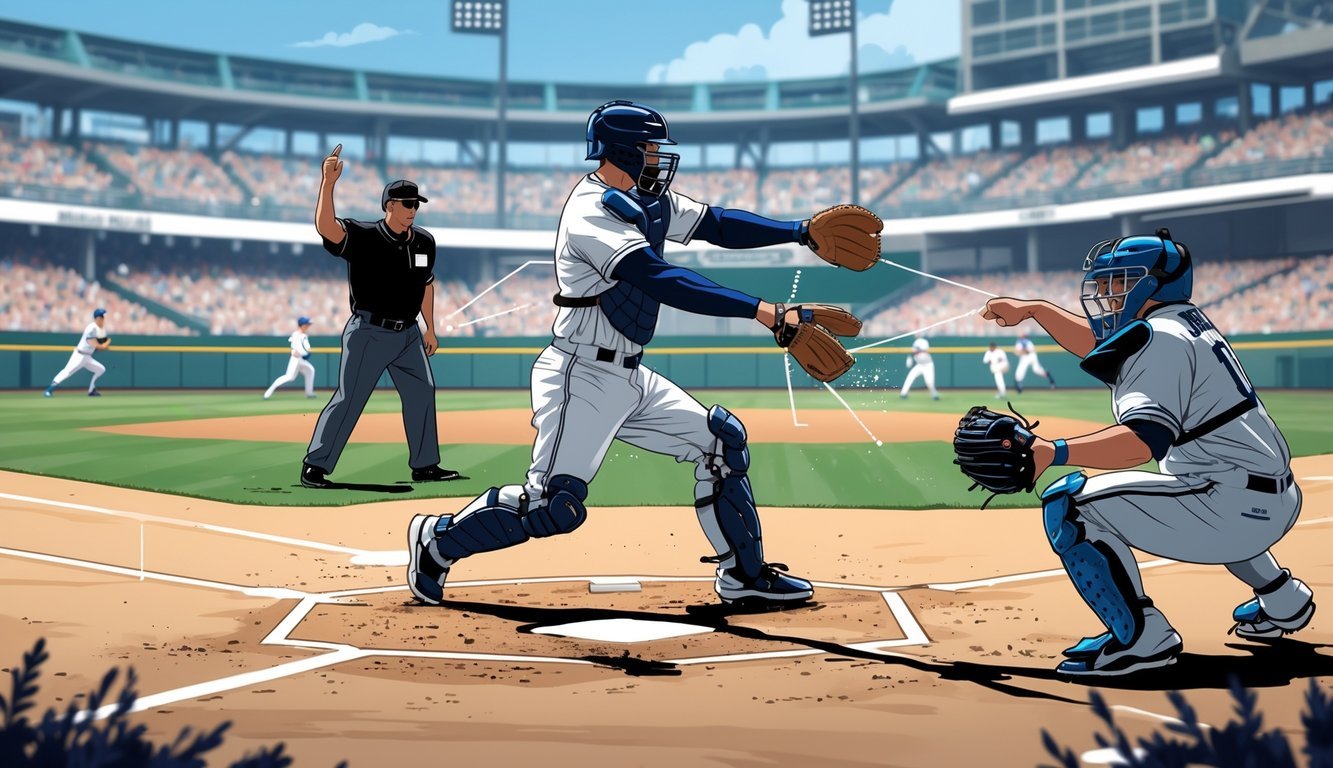
Catcher interference can shake things up. It brings clear penalties, changes player stats, and has even popped up in some famous moments. If you know how it works, you’ll see why teams care about it.
If the catcher interferes with your swing, you get first base. The umpire calls the ball dead, so runners only move if they’re forced to.
No outs get charged, and the defense can’t make a play. The ump signals interference right away if the bat hits the catcher’s glove. If it happens before the pitch, there’s usually no penalty—just a stopped play.
This rule keeps things fair for the batter. And if runners are on, it can stop a double play or change the inning’s pace.
When you reach first on catcher’s interference, it counts as a plate appearance but not an at-bat. Your on-base percentage (OBP) goes up, but your batting average stays the same.
Pitchers see it as a pitch faced, but it’s not a strike or ball. The catcher doesn’t get an error—it’s a rule violation, not a fielding goof.
Managers sometimes have to decide if they want the interference call or to let the play stand, especially with runners on. Usually, you want that free base.
Catcher interference has changed the course of big games, including the World Series. Teams like the Boston Red Sox and New York Yankees have had crucial plays decided by it.
The Chicago Cubs and Kansas City Royals have also seen momentum shift because of interference calls. Managers in both the American League and National League teach players—at every level, even Little League—how to avoid or use this rule.
Players like Jacoby Ellsbury have taken advantage of interference to get on base and help their teams score. If you keep an eye out, you’ll spot how these moments can change an at-bat or even a whole game.
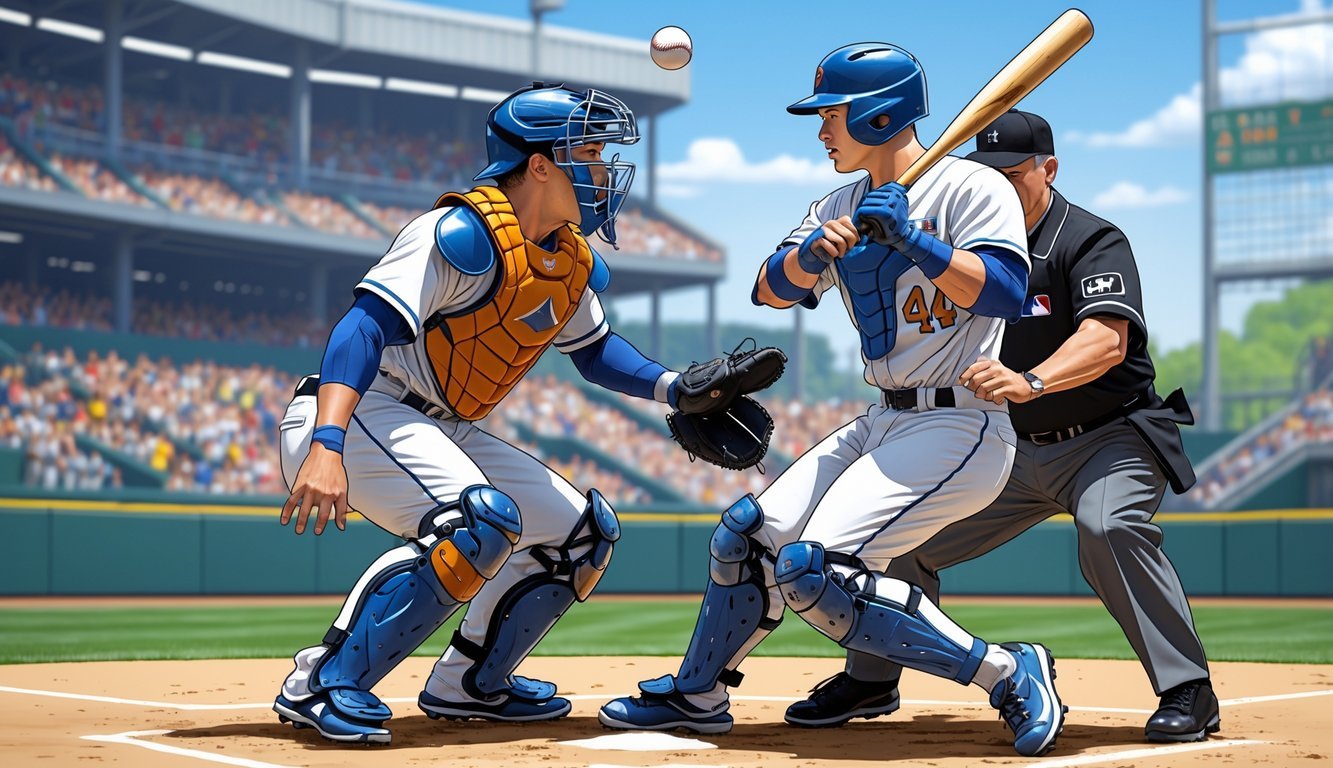
Maybe you’re curious about what counts as catcher‘s interference or how it plays out. Here’s what you need to know.
Catcher’s interference happens when the catcher blocks or touches the batter’s bat during a pitch. That stops the batter from swinging or hitting like they want.
The interference only counts if it happens while the batter is swinging at the pitch. If it happens before the pitch, there’s usually no penalty.
In Major League Baseball, the umpire lets the play finish before making a call. If the catcher’s action ruins the batter’s chance to hit, the umpire gives the batter first base.
If the batter gets to first base anyway, the play just stands and the interference isn’t enforced.
The main penalty is the batter gets first base. Runners already on base move up if they’re forced.
If the umpire catches the interference, the play might keep going, and the call can depend on how things end up.
Yes, softball has catcher’s interference too. The idea is the same—the catcher can’t mess with the batter’s swing.
Rules might change a bit depending on the league, but the basic concept sticks.
When interference is called, the batter gets credited with reaching first base because of it. There’s no hit unless the batter puts the ball in play.
The catcher doesn’t get an error for interference. It’s a rule violation, not a mistake.
Catchers usually try to block wild pitches or protect the plate, and their hands or gear can get in the batter’s swing path.
The tight space and quick movements during a pitch lead to accidental contact, especially if the players are less experienced.